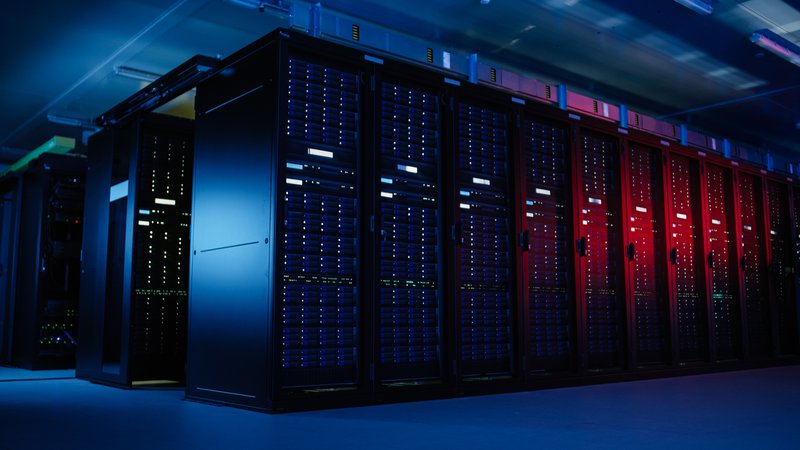
As organizations become increasingly reliant on the Internet, data centers are now an integral part of the global economy. And in today’s data-driven, data-dependent world, data center cooling is an area that’s attracting lots of attention. Why? With cooling technology typically accounting for 45% of overall data center operating costs, increasingly powerful processors are generating heat loads that require cooling techniques that are more efficient, more cost-effective, more environmentally friendly.
Deploying traditional cooling methods means huge power consumption rates, and consequently, bigger costs. Factor in spiraling energy costs, green initiatives, and new high-tech coolants, it‘s becoming clear that expensive air cooling techniques are becoming unsustainable with immersion cooling in the data center space enjoying a renaissance.
Companies across the globe are pivoting to liquid-based cooling solutions to keep data center infrastructure temperatures in check. The reasons why operators are transitioning to immersion cooling include:
– the heat absorption rates of liquids are far greater than that of air
– liquids can transport heat more efficiently
– immersion cooling allows for targeted cooling – nearly impossible to achieve with air cooling systems
The savings delivered in reduced operational expenses and increased density lower total ownership costs significantly. Plus, you’ll see a rapid return on investment and you can even save on real estate.
While traditional air cooling systems and newer immersion cooling systems both work to dissipate heat, they employ different mechanisms and yield different results. Air cooling blows the heat away with fans. Immersion cooling shifts heat away with a fluid that has over a thousand times more thermal capacity than air. This means far more effective results.
Given how much more powerful immersion cooling is, we should not find it surprising that it has been used before. In cars, motor oil lubricates also draw heat away from the motor, while electrical transformers and high-voltage capacitors have used oil as an insulator and coolant for decades. The same principle applies in any of these applications: transfer the heat to the small molecules of a liquid, then move the liquid away from the source.
How can immersion systems save your company a fortune? The answer lies in a liquid’s superior cooling ability. This makes your data center run more smoothly, more efficiently, with less waste to slow you down.
#1 immersion Cooling Is More Efficient
The main advantage of immersion cooling is that it does more for less. The greater efficiency of immersion cooling results not only in lower costs but also in less noise and pollution. The other advantages flow from immersion cooling’s efficient operation. Less electricity translates into big savings.
While air cooling requires substantial amounts of power to run the fans, immersion cooling washes away that expense. You can decrease your utility bills dramatically by cooling a data center with liquid immersion. Breaking down multiple cooling technologies to the level of chillers, fans, and other subsystems, the data reveal that server centers use millions fewer kilowatt-hours per year with a immersion cooling solution than a standard air-cooled cabinet. That adds up to savings of hundreds of thousands of dollars per year. Building modeling approaches have found that in any ambient conditions, liquid is more efficient than air.
In data centers, the computer systems are directly dropped in liquid. This differs from “conductive” immersion cooling where the liquid is kept separate from the computer components through heat sinks or heat pipes. GRC liquid immersion cooling is around 95% more efficient than traditional air cooling.
Remarkably, regular rack-mounted computers can run in this bath. Since immersed servers do not have or need fans, total power usage by the server is lowered by as much as 15%. As well as driving down costs and electricity use, this also speeds up the processors. The heat that normally constrains computer performance is promptly and efficiently dumped into the facility’s cooling systems.
#2 Better Performance for Warmer Climates
While immersion cooling works better in any climate, it offers additional savings of electricity and money in warmer regions. There, air cooling is quite inefficient, due to the already warm air into which heat is pumped. Nonetheless, immersion cooling can bring down the temperature just as it can in colder climates.
For data centers in locations with high temperatures, the combination of heated equipment and hot weather is a potentially damaging cocktail if you deploy an air cooling system. Liquid-based systems can handle the heat through their always-on processes, however, so even in naturally warmer spaces you don’t have to compromise on performance.
#3 Faster ROI for Your Equipment Investment
When you spend money on equipment, it has to earn its keep. The faster the return on investment, the more profit. Cooling is expensive. Immersion cooling is far less so, meaning, you recover costs sooner.
A GRC customer in Houston, for instance, uses over twenty-thousand kilowatts per rack. The cost factor alone eliminates an air cooling option but renders immersion cooling a smarter investment. Other data centers use several times as much electricity per rack. Traditional air cooling can chomp off a sizable part of a data center’s power budget.

Immersion cooling contributes to a green, high-tech data center. The equipment is more reliable than air coolers, so your expensive investments are better protected while decreasing maintenance costs and increasing server availability.
Facebook, Google, and other companies running massive data centers are teaming up to develop an open standard for immersion cooling. This represents the future of server management, and the sooner you invest in liquid technology the faster you’ll reap the dividends.
If you want a quick return on investment and lower ownership costs, you want immersion cooling. It does away with the noisy, costly fans that burn through kilowatts and dollars. You’ll also have a quieter and more pleasing workplace. Even for the most demanding data centers using hundreds of kilowatts, liquid is by far the most efficient cooling method.
#4 It Takes Up Less Space Than Fans
A traditional air-cooled system relies on a series of fans to cool various components. The larger the area, the more fans you need. Liquid on the other hand does not take up nearly as much space. Also, you can start small and add modules as necessary.
To make more space-efficient liquid units involves a somewhat different construction process than your basic air-cooled rack, which isn’t much more than a metal box. Liquid instead uses tubs of circulating coolant that makes the entire data center cost far less. Building a data facility with GRC liquid immersion costs 60% less compared to traditional air cooling systems.
Fans not only require their own space, but this also means air conditioners and large generators alongside them. This in turn means more space requirements. With liquid immersion cooling, you kick this overhead out, saving on space and money.
The growing demand for processing power has put pressure on data centers to pack more servers into the same space. Real estate costs money, so space savings translate into financial savings. Having immersion cooling for intensive workloads thus offers data centers a competitive advantage.
Invest in Immersive Immersion Cooling With GRC
Immersion cooling offers you far more efficiency, which repays the initial investment with huge utility savings in the bargain. Moreover, it boosts your processor speeds, reduces noise, takes up less space, and even protects the environment.
For over a decade, the GRC team has been breaking through limitations and setting new standards for data center cooling and efficiency worldwide, providing patented technology that is cost-effective, future-proof, scalable, agile, resilient, and efficient.
Ready to break the heat barrier and shatter limits on data center growth? Get in touch with the GRC team today and learn more about why we are the immersion cooling authority!




